|
Me Sahyadri |
|
November 2016- A |
|
Volume 3, number 16 |
|
|
Please use minimum 1280 pixel horizontal screen resolution for viewing. Please be patient while all the images in webpage are loaded. Please do not use the images for any commercial use without permission. Text in Marathi and English is not exact translation. Please give sufficient time to allow the photographs to load. Special thanks to all those who helped me during the compilation and for the help and guidance during the activity. |
|
|
|
|
देशाची आर्थिक प्रगती व्हावी असे सर्व नागरिकांना वाटणे सहाजिक आहे. अर्थकारणामुळे मिळणारा रोजगार, समृद्धी यासाठी सर्वांनाच आर्थिक प्रगती हवी हवीशी वाटते. आर्थिक प्रगती होताना, त्याचा दिर्घकाळात समाजावर, निसर्गावर, वातावरणावर दुष्परिणाम होणार नाही याची काळजी घेणे महत्वाचे आहे. मनुष्याच्या भावी पिढ्यांना पाणी, शुद्ध हवा, योग्य वातावरण मिळत रहावे अशी भावना मनात रुजणे महत्वाचे आहे. वाढत्या आर्थिक प्रगतीमुळे नैसर्गिक संपदेवर ताण येतो. प्रगतीसाठी प्रदुषण होते. जंगले, माळराने, व इतर अधिवास नष्ट होतात. वसुंधरेवर रहाणाऱ्या इतर जीवांचा मात्र मनुष्य फारसा विचार करत नाही. आर्थिक प्रगती करताना, मनुष्य निसर्गाची हानी करत आहे. मुळताच माणसाला निसर्गाचे महत्व समजणे हे सध्याच्या आपल्या प्रगत जीवनशैली मुळे अवघड झाले आहे. आर्थिक प्रगती, समाजाची प्रगती व निसर्ग संपदेची निगा, यांचा समतोल राखणे काळाची गरज आहे.
सह्याद्री (पश्चिम घाट) हा एक नैसर्गिक संपदेचा, वैविध्यतेचा, भौगोलिक व ऐतिहासिक ठेवा आहे. वाढत्या मानवी अतिक्रमणाचा, सह्याद्रीच्या विविध घटकांवर होणारा दुष्परिणाम भविष्यात आपल्यालाच धोका निर्माण करेल, यात शंका नाही. शुद्ध पाणी, हवा व उर्जा, भावी पिढीला मिळण्यासाठी, नंद्यांचे उगम असलेला सह्याद्री व त्याभागातील जंगले टिकवणे महत्वाचे आहे. सह्याद्रीच्या महत्वाच्या घटकांचे महत्व छायाचित्रांद्वारे प्रकट करण्याचा मी येथे प्रयत्न केला आहे. येथील पक्षी, प्राणी, वनस्पती, अधिवास, किल्ले व लेणी अशा विविध विषयांबद्दल आपण समजुन घेऊ.
|
|
As the economic development has taken the center stage, the balance between the environmental sustenance and socio economic development will be under the scanner. As most experts with balanced views have proclaimed, Indian wildlife and ecological system sustenance will be under threat, unless precautions are taken with the help of appropriate research and long term national interests. As we encounter the economic development, many habitats which indirectly or directly help sustainable development will be damaged. The awareness to gauge the success by sustainable development and not by year to year growth is a distant dream any environmentalist will assume in current scenario.
Western ghats, or Sahyadri as we all call it as, is a treasure trove of spectacular landscapes, biodiversity, flora, fauna, some amazing geological wonders and man made monuments. With the increasing pressure from human encroachment, all these elements are under stress and in turn are under depletion. Western ghats should be left untouched by human beings, to protect their future generations from getting short of resources, such as water, energy and clean air. The important elements of western ghats, which need protection are highlighted in the new version of Photo journal, Me Sahyadri Magazine. The current issue has few of the flora from the north Western Ghats.
|
|
|
| |
 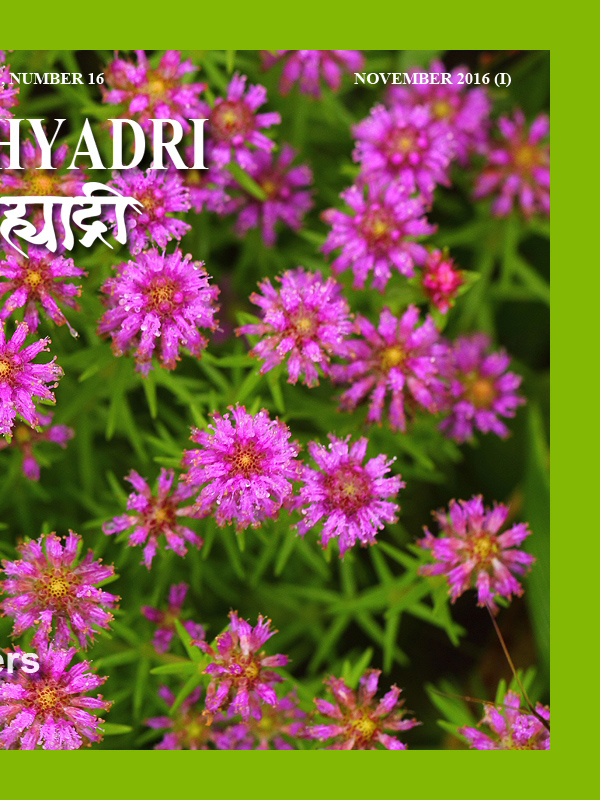
|
| |
| Me Sahyadri – November 2016 (I)
|
| |
|
|
| |
  |
| The banner has been published here to improve the awareness of the trekkers and tourists visiting the various mountain forts, mountains in north western ghats. Please avoid accidents, by following good outdoor ethics such as no swimming in cisterns at mountain forts, no rock climbing without proper technical equipment and expertise. Please do not adventure, trek with any group or individually without understanding the risks associated. The frequency of the solo trekker fatalities have increased recently. Please strictly avoid solo treks. Please also avoid treks to mountains in large commercial groups, as it leads to damage to biodiversity of these high elevation ecological islands. Please respect the wildlife and biodiversity of the region. This has become more important as the ever increasing human interference is leading to severe damage to fragile ecosystems. Please be aware of the wildlife and biodiversity of the mountains before visiting these mountains. Please follow outdoor ethics. Follow ASI and Forest department rules. The concept of use of symbols for outdoor ethics was conceived and designed by "Sahyadri Trekker Bloggers Group". |
| |
|
|
| |
  |
| 1. Senecio bombayensis bloom, Ahmednagar district, Maharashtra, Western ghats, India |
| |
|
|
पावसाळ्याच्या उत्तरार्धात सोनकीची सोनेरी फुले घाटमाथ्यावर सह्याद्रीत सर्वदुर फुलतात. डोंगर उतारावर, घरांच्या छपरावर, कड़्याच्या टोकावर सर्वत्र सोनकीची फुले दिसतात. या फुलांची मधली तबकडी पिवळसर सोनेरी असते व याला १० ते १५ पाकळ्या असतात. शास्त्रीय भाषेत या वनस्पतीला सेनेसिओ बॉम्बेन्सीस असे म्हणतात.
|
|
Senecio bombayensis is called as Sonki in Marathi. It is a gregarious plant of western ghats which mass flowers in later period of monsoon season in September. It is seen on hill slopes on north western ghats and is endemic species. The flowers are golden yellow with 10 to 15 petals, with a dark golden yellow disks.
|
|
|
| |
  |
| 2. Senecio bombayensis bloom, Ahmednagar district, Maharashtra, Western ghats, India |
| |
|
|
| |
  |
| 3. Senecio bombayensis bloom, Ahmednagar district, Maharashtra, Western ghats, India |
| |
|
|
| |
   |
| 4. Senecio bombayensis and impatiens balsamina bloom, Ahmednagar district, Maharashtra, Western ghats, India |
| |
|
|
| |
   |
| 5. Smithia purpurea, Ahmednagar district, Maharashtra, Western ghats, India |
| |
|
|
| |
   |
| 6. Senecio bombayensis and impatiens balsamina bloom, Ahmednagar district, Maharashtra, Western ghats, India |
| |
|
|
| |
   |
| 7. Senecio bombayensis, Ahmednagar district, Maharashtra, Western ghats, India |
| |
|
|
| |
 
|
| |
| 8. Senecio bombayensis bloom, Ahmednagar district, Maharashtra, Western ghats, India |
| |
|
|
| |
 
|
| |
| 9. Pogostemon deccanensis, Ahmednagar district, Maharashtra, Western ghats, India |
| |
|
|
| |
 
|
| |
| 10. Pogostemon deccanensis, Ahmednagar district, Maharashtra, Western ghats, India |
| |
|
|
| |
 
|
| |
| 11. Pogostemon deccanensis, Ahmednagar district, Maharashtra, Western ghats, India |
| |
|
|
जांभळी मंजिरी नावाने ओळखली जाणारी वनस्पती पावसाळ्यात घाटमाथ्यावर सह्याद्रीत दिसते. पाण्याच्या लहान डबक्यात खुप संख्येने एकत्र उगवते. या वनस्पतीला हिरवे तुरे असतात. या तुऱ्यांवर जांभळी लहान फुले येतात. या फुलांचा एकत्र ताटवा आल्हाद दायक असतो. शास्त्रीय भाषेत या वनस्पतीला पोगोस्टेमोन डेक्कनेन्सिस असे म्हणतात.
|
|
Pogostemon decannensis is a small aquatic herb seen in small shallow water puddles. These plants are gregarious and its flowers bloom in large numbers. The flowers are purple in colour. The plant attracts the pollinators due to its scent. These plants can be seen in small puddles on basalt plateaus, giving a feel of a flower pots in post monsoon season. These plants are called as Jambhali Manjiri in Marathi.
|
|
|
| |
 
|
| |
| 12. Pogostemon deccanensis, Ahmednagar district, Maharashtra, Western ghats, India |
| |
|
|
| |
 
|
| |
| 12. Pogostemon deccanensis, Ahmednagar district, Maharashtra, Western ghats, India |
| |
|
|
| |
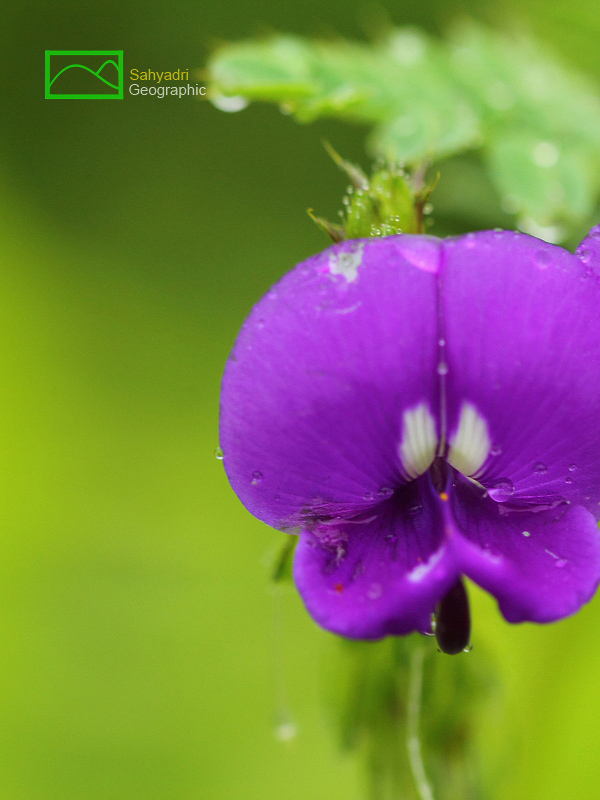 
|
| |
| 13. Smithia purpurea, Ahmednagar district, Maharashtra, Western ghats, India |
| |
|
|
| |
 
|
| |
| 14. Smithia purpurea, Ahmednagar district, Maharashtra, Western ghats, India |
| |
|
|
स्मिथीया जातीची जांभळी फुले पावसाळ्याच्या उत्तरार्धात घाटमाथ्यावर तुरळक प्रमाणात दिसतात. या फुलांचा रंग जांभळा असतो व त्यावर सफेद ठिपके असतात. फुले सकाळी उमलतात व दुपारपर्यंत मिटतात. मधमाश्या या वनस्पतीचे परागीकरण करण्यास मदत करतात. शास्त्रीय भाषेत या वनस्पतीला स्मिथिया पुर्पुराइ असे म्हणतात.
|
|
This is an endemic species of Smithia seen in western ghats. The flowers are purple with white dots. The plants are pollinated by the insects. These terrestrial plants are seen in open on basalt soil at altitude. These plants are called as Barka in Marathi.
|
|
|
| |
 
|
| |
| 15. Ceropegia rollae, Ahmednagar district, Maharashtra, Western ghats, India |
| |
|
|
सिरोपेजिआ रोलाई नावाची एक अत्यंत दुर्मिळ वनस्पती सह्याद्रीच्या जुन्नर भागात दिसते. सिरोपेजिआ रोलाई वनस्पती अंतर्जन्य असुन इतरत्र हि वनस्पती आढळत नाही. यामुळे याचे महत्व अनन्यसाधारण आहे.
आपल्या देशात सेरोपेजिआ जातीच्या एकुण ५८ प्रजाती आढळतात. यातील ३५ प्रजाती सह्याद्रीमध्ये आढळतात. हि वनस्पती अत्यंत दुर्मिळ असुन लुप्त होण्याच्या मार्गावर आहे.
सेरोपेजिआ वनस्पतीला कंदिलाच्या सारखी फुले येतात. याला कंदिलपुष्प असे संबोधतात.
वनस्पतीला येणारी फुले त्या वनस्पतीची जणु जाहिरात करतात. परागीकरण करण्यासाठी मदत करणाऱ्या माश्या, किडे व इतर जंतु फुलांवर आकर्षित होतात. फुलांमधुन येणारा सुगंध या माश्यांना भुलवतो. विविध सेरोपेजिआ वनस्पती यासाठी वेगवेगळ्या शक्कल लढवतात. काही वनस्पती सडलेल्या वस्तुचा वास पसरवतात. तर काही मादक सुगंध पसरवतात. या दोन्ही प्रकारात माश्या आकर्षित होतात.
सेरोपेजिआ चे फुल कंदिलासारखे असतए. फुलाचा मुख्य भाग आत दडलेला असतो. माशी फुलात गेल्यावर माशी बराच काळ आत रहाते. या वेळात माशीच्या अंगावरुन परागांची देवाण घेवाण होते.
मात्र ग्रामिण जनतेकडुन होणारा औषधी वापर, जंगलतोड, मानवी हस्तक्षेप, वनस्पतीची कमी झालेली संख्या या मुळे वनस्पती कमी होत आहे.
शास्त्रीय भाषेत या वनस्पतीला सेरोपेजिया रोलाई असे म्हणतात.
|
|
Ceropegia plants are very rare, endemic and critically endangered plants. In India total 58 species of Ceropegia are found. Out of 58 species, 35 species are found in western ghats.
It is crtically endangered species seen in the small region of north western ghats, around Junnar. It is endemic species of north western ghats mountains around Junnar.. Endemic means restricted to a region and not found outside the region.
Apart from the showiness of visual features, flowers of many plants use floral scent, fragrance to attract their pollinators. These flowers are like advertisement boards of these plants. These advertisements attract the pollinators. Pollinators get attracted towards the flower due to the fragrance. The pollinators feel that there is a food that is giving out the scent. But often the pollinators are cheated. There is actually no food. The fragrance is created chemically by the plants to cheat the insects. Many ceropegia species does the same. Ceropegia has a sophisticated pitfall flowers.
Various species of Ceropegia are pollinated by small flies which are trapped inside the flowers for a limited time period. During this trap time, the plant deposit or take up pollinaria/pollinia from or to flies. The fly pollinators of Ceropegia belong to diverse families, but, typically, only species of a specific families interact with a single species of Ceropegia. ). The flowers mimic nectar, rotting plant material, male sex pheromones, animal related odors, leading to pollinating flies being attracted for food. So these plants mimic the food source of the flies.
Once attracted to enter the tubers of the flowers, the flies help the pollination.
The habitat destruction caused through anthropogenic activities and over exploitation of edible and medicinal tubers by local people, constrained small localized and dwindling populations of C. rollae have caused the species to be on the brink of extinction.
|
|
|
| |
 
|
| |
| 16. Ceropegia rollae, Ahmednagar district, Maharashtra, Western ghats, India |
| |
|
|
| |
 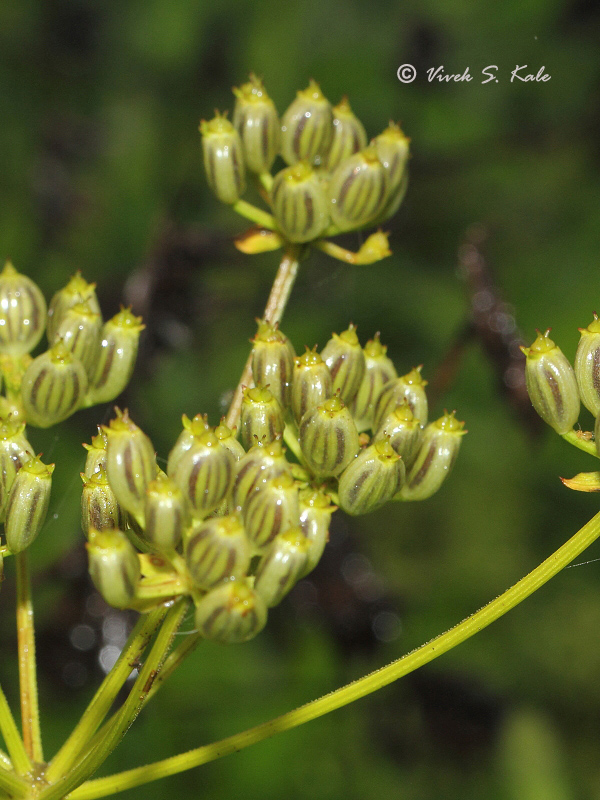
|
| |
| 17. Pinda concanensis, Ahmednagar district, Maharashtra, Western ghats, India |
| |
|
|
| |
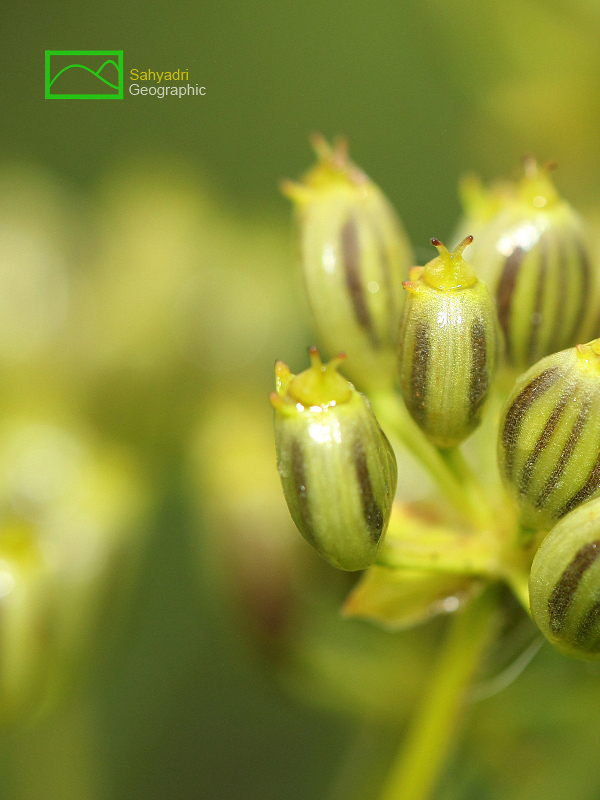 
|
| |
| 18. Pinda concanensis, Ahmednagar district, Maharashtra, Western ghats, India |
| |
|
|
. पिंड नावाची सफेद फुले असलेली वनस्पती सह्याद्रीच्या घाटमाथ्यावर पावसाळ्यात आढळते. या वनस्पतीला येणाऱ्या बिया औषधी साठी अनियंत्रित पद्धतीने गोळा केल्या जातात. या मुळे या वनस्पती ची संख्या रोडावत आहे. वनस्पतीची मुळे आहारात वापरली जातात. शास्त्रीय भाषेत या वनस्पतीला पिंडा कोंकनेन्सीस असे म्हणतात.
|
|
Pinda concanensis is a plant seen at higher elevations in monsoon in western ghats. The plant has white flowers. The plant is seen on grasslands at higher elevations. The plant is heavily exploited for the medicinal values of the oil extracted from its seeds. The exploitation of the plant is rising posing serious threat to its existance
|
|
|
| |
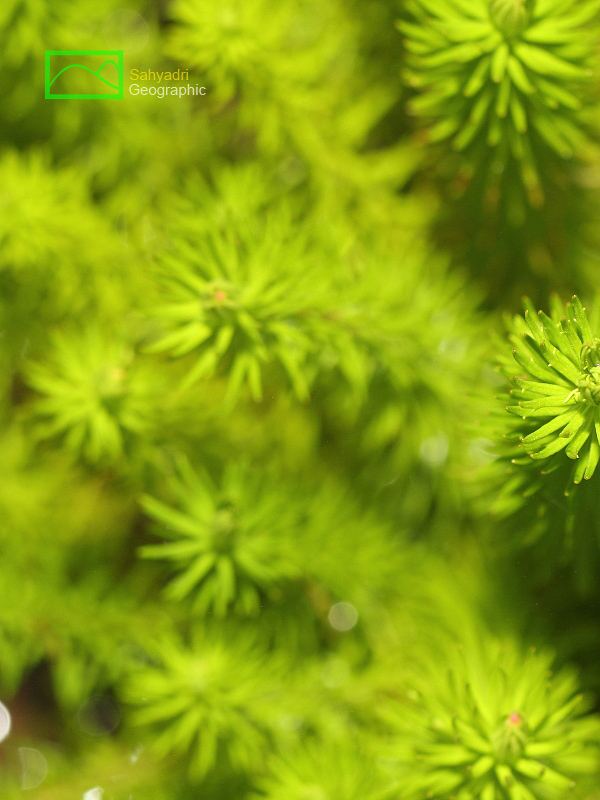 
|
| |
| 19. Pogostemon, Ahmednagar district, Maharashtra, Western ghats, India |
| |
|
|
| |
 
|
| |
| 20. Pleocaulus ritchie bloom, Ahmednagar district, Maharashtra, Western ghats, India |
| |
|
|
| |
 
|
| |
| 21. Utricularia species, Ahmednagar district, Maharashtra, Western ghats, India |
| |
|
|
युट्रिक्युलेरिआ जातीच्या वनस्पती किटकभक्षी वनस्पती आपला सह्याद्रीत आढळतात. या वनस्पती अत्यंत लहान असतात. पावसाळ्यात पाणथळ ठिकाणी या वनस्पती उगवतात. या वनस्पतींना टोकावर फुल येते. वनस्पतीला पाने नसतात. जमिनीखाली मात्र या वनस्पतीच्या मुळांचे जाळे असते. या जाळ्यात लहान लहान फुग्यांसारख्या पिशव्या असतात. या पिशव्यांना एक लहान तोंड असते व त्याला एक झाकण असते. झाकणाबाहेर तंतु असतात. पिशव्यांना बाहेरुन सुक्ष्म जीवांना आकर्षित करता येईल असे आवरण असते. तंतु चा हालचालीमुळे झाकण उघडते. बाहेरचे पाणी सुक्ष्म जीवांसकट पिशवीच्या आत जाते. झाकण क्षणभरात बंद होते. पिशवीच्या आत असलेल्या पाचक द्रव्यांमुळे सुक्ष्म जीव विरघळतात व वनस्पतीला खाद्य मिळते.
या दरम्यान पिशवीच्या आवरणातुन आतले पाणी हळु हळु बाहेर पाझरते. हि प्रक्रिया ओसमोसिस मुळे होते. पिशवी रिकामी झाल्यावर पुन्हा झाकण उघडले जाते. पुन्हा बाहेरचे पाणी जीवांसकट आत घेतेले जाते. अशी प्रक्रिया सतत घडते राहाते.
पावसाळ्याअखेर वनस्पतीच्या बिया आजुबाजुस पसरतात. वनस्पती वाळुन जाते. पुढच्या पावसाळ्य़ात पुन्हा उगवते. असे निसर्ग चक्र चालु रहाते.
सर्व किटक भक्ष वनस्पतींमध्ये युट्रिक्युलेरिआची जीव पकडण्याची पद्धत सर्वात जास्त गुंतागुंतीची व प्रभावी आहे.
शास्त्रीय भाषेत या वनस्पतीला युट्रेक्युलेरिआ असे म्हणतात.
|
|
Utricularia plants are commonly called as bladderwort plants.The important part of any bladderwort plant is beneath the surface of soil. The prominent flowering stem can be seen above the ground. This plant has long branching network of stems beneath the surface. The small bladder traps and leaves are attached to these stems. The word utricularia is derived from latin word utriculus. It means a small wine bottle. This small bag or a bladder has a opening which is sealed. The bladder has external secrations to attract the small organisms.
The bladder or a small bag has tiny hair like structures, which act as a trigger to open the seals of the bladder. If the trigger is actuated, the small bladders are filled with water as the seals of the bladder are opened. With the water small organisms such as protozoa enter the bladder. This is a process which happenes in a split second. Once inside the prey is dissolved due to digestive enzymes secreted by the plant.
The water is slowly pumped out of the bladder, creating the vacuum inside. Inspite of vacuum the bladder does not collapse. The water is pumped out by osmosis process, through the thin membranes of the bladder. Once the pumping stops due to osmosis, the seals open. As the seals open, the water enters inside due to the vacuum generated. This process continues in cycles.
It is said that these plants have the most sofisticated trapping mechanism amongst all the carnivorous plants.
|
|
|
| |
 
|
| |
| 22. Utricularia species, Ahmednagar district, Maharashtra, Western ghats, India |
| |
|
|
| |
|



















































